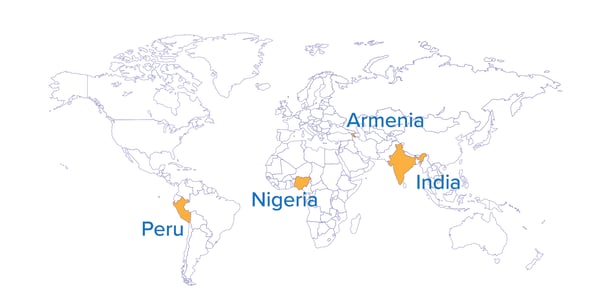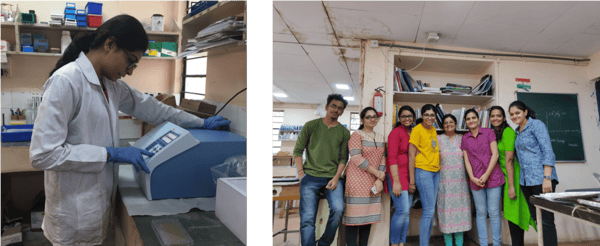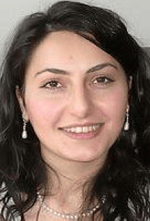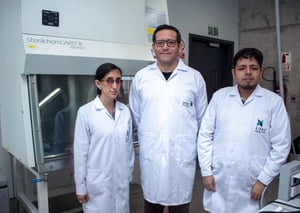By Susanna Bachle and Ina Ersing
Seeding Labs and Addgene collaborate to provide scientific resources, equipment, and plasmids to researchers in resource-limited settings. More specifically, the Addgene-Seeding Labs plasmid grant provide plasmids to these researchers. In the third round of the Addgene-Seeding Labs plasmid grant we are excited to introduce the 5 awardees and their research. These researchers span four continents and research diverse topics including microbiology, brain injury, drug discovery, and synthetic biology. Read on to learn more about the five awardees and their promising research projects.

Understanding drug resistance mechanisms of Mycobacterium tuberculosis
Dr. Patricia Sheen, Universidad Peruana Cayetano Heredia, Peru
Patricia Sheen, Professor in Microbiology, and her group are interested in understanding the mechanisms behind Mycobacterium tuberculosis resistance to pyrazinamide (PZA) (a drug commonly used to treat tuberculosis) and in identifying new drug targets. An early and accurate detection of PZA-resistance is necessary to improve tuberculosis care and control. In her current research, Sheen aims to identify new genes related to PZA-resistance by using different approaches, including CRISPR and recombination-mediated genetic engineering (find more information on bacterial engineering using CRISPR on our blog). Her research should provide us with a better understanding of PZA action and could potentially stimulate the development of useful diagnostic methods and improved therapies for PZA-resistant Mycobacteria tuberculosis.
Investigation of multispecies biofilm formed by Pseudomonas spp. and Klebsiella spp.
Dr. Devarshi Gajjar, The M. S. University of Baroda, India
Devarshi Gajjar has 10 years experience in the field of bacterial and fungal pathogenesis. Her research focuses on a collection of pathogenic Klebsiella and Pseudomonas isolates causing urinary tract infections.
This project aims to examine the antibiotic susceptibility of biofilms formed on various structured surfaces. Plasmids expressing fluorescent proteins will be used to tag individual strains of bacteria. Their interactions and growth within the biofilms will then be monitored using fluorescence microscopy and FACS. In an additional approach, plasmids such as pACBSR-hyg and pFLP-hyg will be used to create gene deletions of important unknown regulatory regions in Pseudomonas and Klebsiella spp. The effects of these deletions on biofilm formation and growth will then be measured to link the deleted genes to specific functions in biofilm formation.

The quest for plant compounds to treat complications of diabetes

Gloria Otito Izu, PhD Candidate, University of Ibadan, Nigeria
under supervision of Dr. Akindele Oluwatosin Adeyi, University of Ibadan, Nigeria
Gloria Otito Izu is a PhD Candidate working under the supervision of Akindele Oluwatosin Adeyi at the University of Ibadan. She works with medicinal plants such as Launaea taraxacifolia (Willd), an annual herb of Western Tropical Africa typically known as wild lettuce. Aside from their use as food, infusions of L. taraxacifolia leaves are widely used to treat several diseases. Her goal is to identify and isolate pure plant compounds with antidiabetic properties that can ameliorate diabetics nephropathy, one of the major pathophysiological complications of diabetes mellitus. Recombinant human proteins that play a role in insulin regulation and diabetes will be expressed from plasmids (find more information on bacterial expression systems here) and the activity of the plant compounds on these proteins will be tested.
Investigating changes in neuronal activity after ischemic brain injury
 Dr. Gohar Tsakanova, Institute of Molecular Biology of the National
Dr. Gohar Tsakanova, Institute of Molecular Biology of the National
Academy of Sciences of the Republic of Armenia, Armenia
Gohar Tsakanova is a Senior Researcher who investigates the molecular and cellular etiopathomechanisms of ischemic stroke, the most common type of stroke and the third leading cause of death and disability worldwide. An ischemic stroke occurs when arteries leading to the brain become blocked, resulting in reduced blood flow. Novel treatment options, as well as non-pharmacological solutions to modify the course of this condition are urgently needed. Therefore, understanding neuronal networks, their interactions and information processing during this condition is crucial.
Plasmids expressing fluorescent proteins and a new two-photon laser scanning microscope will allow Tsakanova to image cortical neurons and study changes in neural activity after ischemic brain injury. Additionally, optogenetic plasmid tools and non-linear microscopy methods will be used to stimulate and manipulate neural populations in order to get new insights into functional network interactions.
Combining synthetic biology with engineering: glowing bacteria and a fish robot to detect water pollution
Dr. Julio Ernesto Valdivia Silva, Universidad de Ingeniería y Tecnología (UTEC), Peru
Julio Ernesto Valdivia Silva is a master of interesting combinations: biomedicine and astrobiology. During the last 11 years he has studied various aspects extreme life on earth including extremophile microorganisms, biomarkers, and recently, cancer research related to space medicine.
Now he aims on tracking pollution in rivers by employing synthetic biology resources and microfabrication technologies to generate a self renewable sensor, a bacterium that can sense contaminants and emit light as a response. To create this bacterial sensor, he will construct plasmids containing promoter regions that activate fluorescent protein transcription in response to river contaminants and transform these plasmids into a bacterial strain. The sensor will be transported inside a small 3D printed robot that will “swim” in the river, take water samples at specific locations, measure fluorescent signals from the sensor, and send a signal including its position in the river back to the user.

At Addgene we're happy to be able to support diverse groups of scientists working in a wide range of research fields and geographical locations. In addition to providing reagents and educational resources for scientists globally, Addgene has partnered with various community organizations and workforce projects to reach audiences beyond our plasmid depositors and requesters. Check out some of our recent endeavors here.
We are excited to see how all of the Addgene-Seeding Labs Plasmid Grant awardees' projects progress. Subscribe to the Addgene blog for updates and future collaborations.
Many thanks to all of the awardees, all who applied, and to Seeding Labs who helped us coordinate and promote the awards.
Additional Resources on the Addgene Blog
- Learn More About the Addgene-Seeding Labs Plasmid Grant
- Check Out Addgene-Seeding Labs Plasmid Grant Awardees in 2016 and 2017
- Listen to Our Interview with Previous Awardee Kwabena Duedu
Resources at Addgene.org
- Check out our CRISPR resources and CRISPR for plants
- Bacterial Expression Systems
- Synthetic Biology Resources
- Learn about Global Plasmid Distribution
Topics: Addgene News, Awards







Leave a Comment